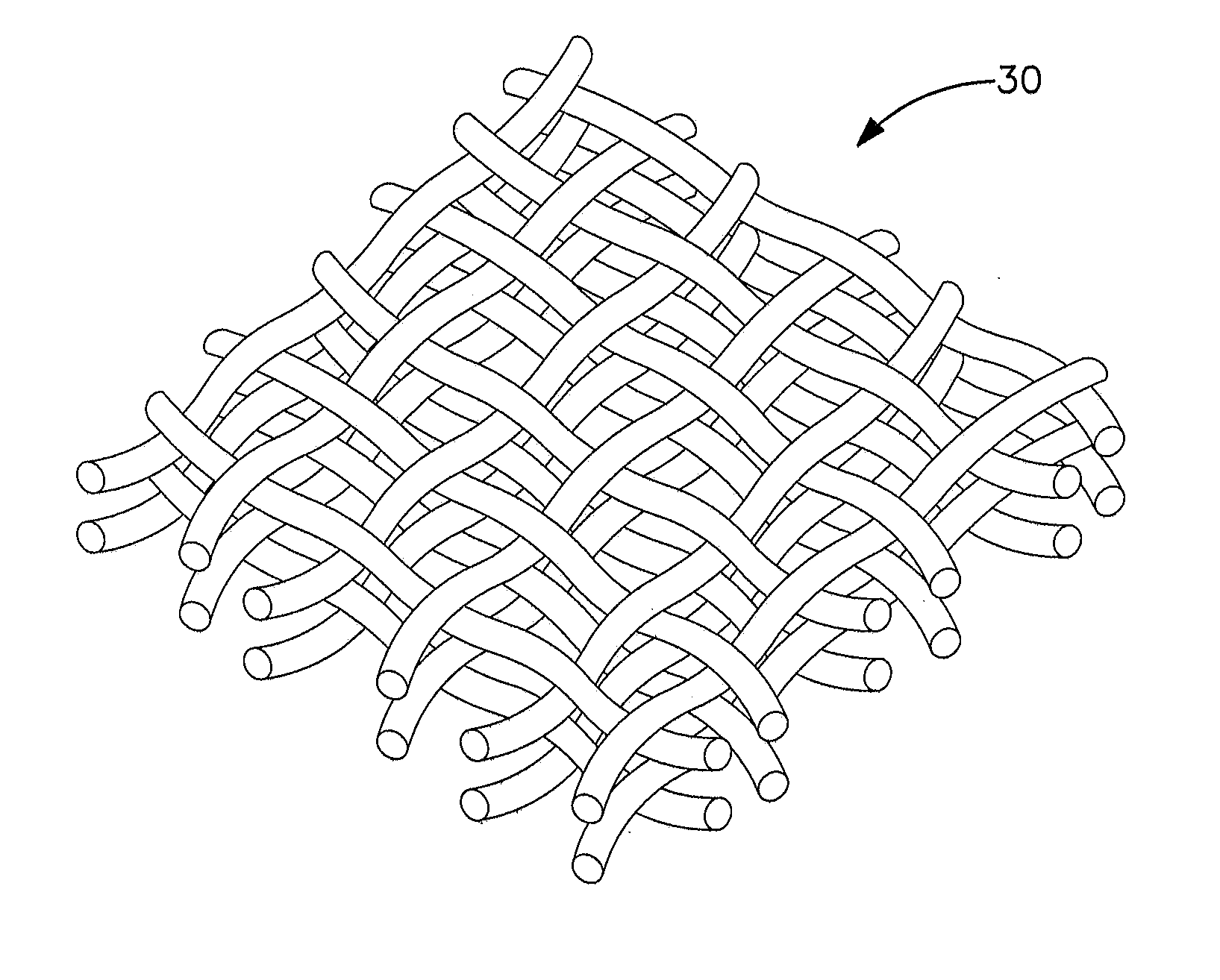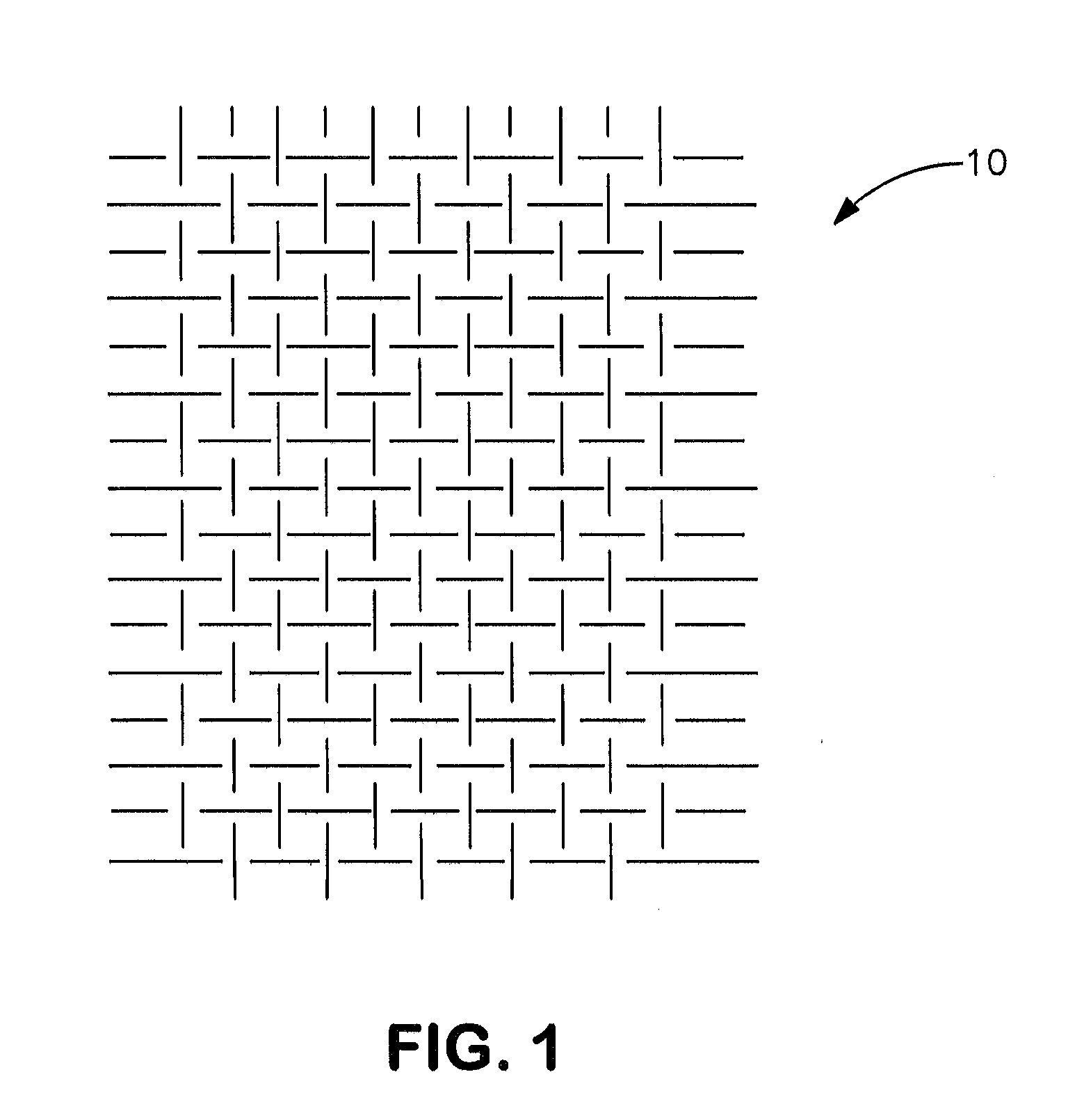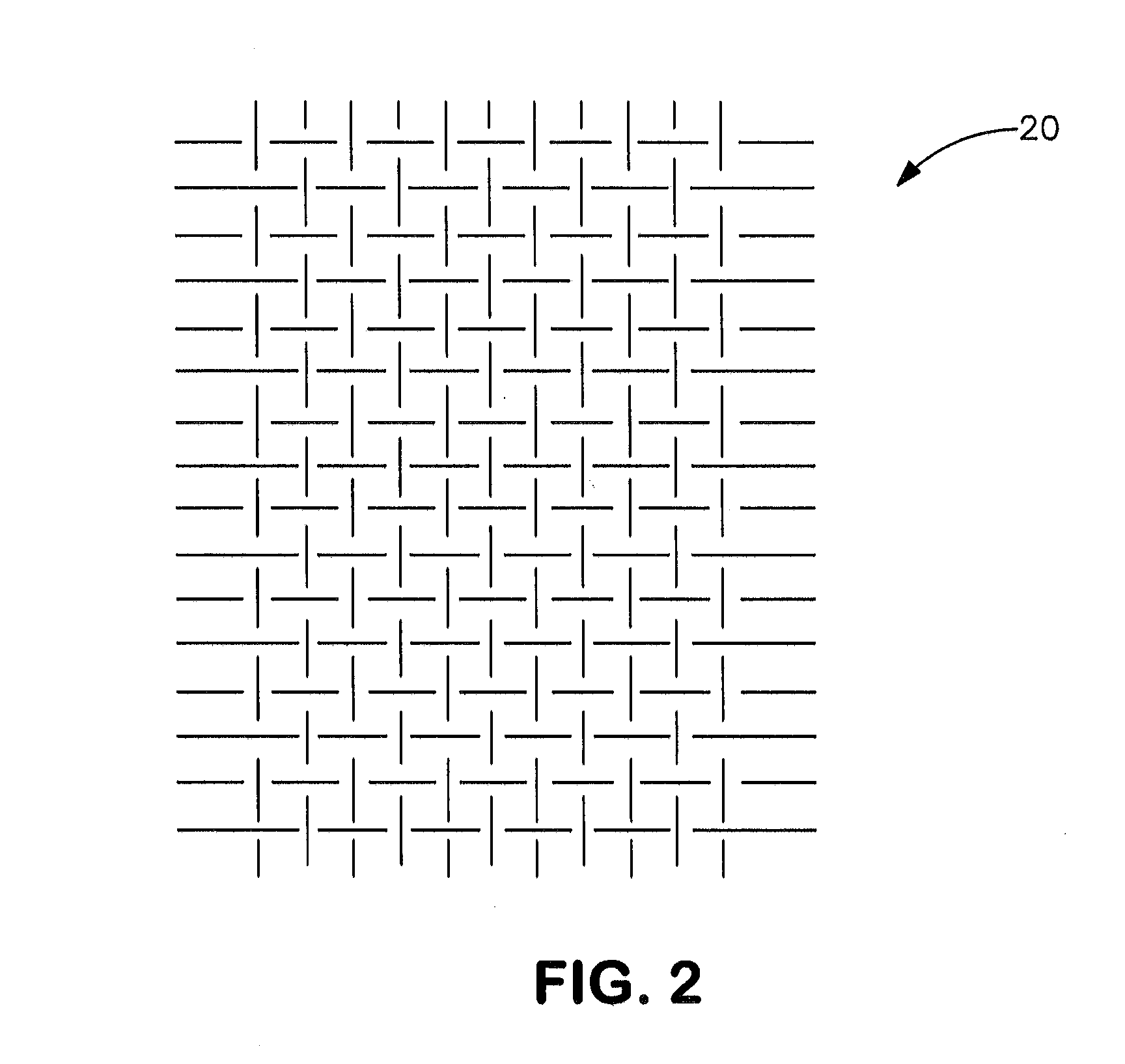Protective Undergarment
a protective undergarment and undergarment technology, applied in protective equipment, thin material handling, weapons, etc., can solve the problems of not protecting the wearer, uncomfortable wearing, bulky and heavy pugs, etc., to improve the comfort of the undergarment, maintain strength, and excellent ballistic protection
- Summary
- Abstract
- Description
- Claims
- Application Information
AI Technical Summary
Benefits of technology
Problems solved by technology
Method used
Image
Examples
example 1
Invention 100% 400 Denier ePTFE Multifilament 33×33, 1-Layer
[0020]A plain weave textile consisting of 33 ends per inch (epi) by 33 picks per inch (ppi) equivalent to 1300 epm by 1300 ppm textile composed of 400 denier (444 dtex) expanded PTFE multifilament part number V112939 available from W. L. Gore and Associates, Inc. Elkton, Md. Prior to weaving, the filament was twisted to 1.2 twists per inch (47.2 twists per meter) in a Z twist configuration using a ring spinning frame.
example 2
Invention 100% 400 Denier ePTFE Multifilament 36×36, 1-Layer
[0021]A plain weave textile consisting of 36 ends per inch (epi) by 36 picks per inch (ppi) equivalent to 1417 epm by 1417 ppm textile composed of 400 denier (444 dtex) expanded PTFE multifilament part number V112939 available from W. L. Gore and Associates, Inc. Elkton, Md. Prior to weaving, the filament was twisted to 1.2 twists per inch (47.2 twists per meter) in a Z twist configuration using a ring spinning frame.
example 3
Invention TWARON 550 DTEX / PTFE 444 DTEX 29×29 (Alternating Every Other End) 1-Layer
[0022]A plain weave textile consisting of two filament materials woven at 29 ends per inch (epi) by 29 picks per inch (ppi) equivalent to 1142 epm by 1142 ppm textile. The filament materials were a 400 denier (444 dtex) expanded PTFE multifilament part number V112939 available from W. L. Gore and Associates, Inc. Elkton, Md. and 495 denier (550 dtex) paramide Twaron® available from Teijin Aramid Company, Conyers, Ga. The two materials were woven every other pick and every other end forming a balanced weave design. Prior to weaving, the 400 denier expanded PTFE filament was twisted to 1.2 twists per inch (47.2 twists per meter) in a Z twist configuration using a ring spinning frame. In this example the woven fabric is 45% ePTFE by weight.
PUM
 Login to View More
Login to View More Abstract
Description
Claims
Application Information
 Login to View More
Login to View More - R&D
- Intellectual Property
- Life Sciences
- Materials
- Tech Scout
- Unparalleled Data Quality
- Higher Quality Content
- 60% Fewer Hallucinations
Browse by: Latest US Patents, China's latest patents, Technical Efficacy Thesaurus, Application Domain, Technology Topic, Popular Technical Reports.
© 2025 PatSnap. All rights reserved.Legal|Privacy policy|Modern Slavery Act Transparency Statement|Sitemap|About US| Contact US: help@patsnap.com



